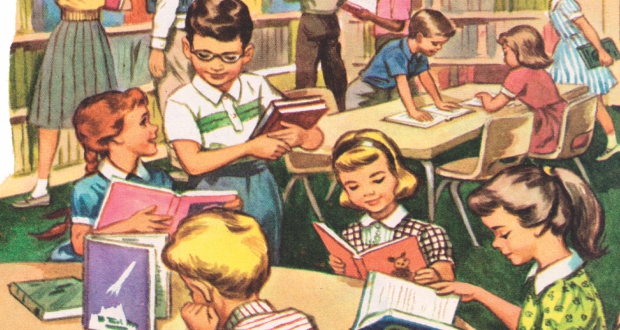Every Catholic homeschooler knows the marks of the church – One, holy, catholic and apostolic. We recite them in the Creed at Mass, and they remind us of the nature of our Church. In much the same way, Catholic homeschooling has marks and characteristics too. In keeping with our traditions regarding education, the marks of Catholic homeschooling are excellent, orderly, and Catholic, and each of these should in some way characterize our family learning.
Excellence
Beginning with monastery and cathedral schools, the Church expanded the number of children of all backgrounds who could receive a formal education. The Catholic Church founded the university system in Europe – the roots of American higher learning. Rigorous standards of the parish school system in the late 19th and early 20th century America lifted the children of Irish, German, Polish, and Italian immigrants out of poverty in the tenements, to comfortable lives in mainstream society – often in just one generation!
In the last quarter of the 20th century, parents, remembering the excellence of their own Catholic educations, refused to settle for anything less for their children, and brought them home. Before Seton began to publish Catholic materials, mothers were scouring garage sales to purchase discontinued Catholic textbooks that would demand the best from their children. Pioneering homeschool parents committed their lives to continuing the Church’s tradition of academic distinction, and now we can do no less.
Excellent comes from the verb “to excel”. For students to excel, they should do their best to achieve as much as they can achieve. Excelling does not mean the same thing for each student. In fact, each student has different talents and abilities, and an excellent program should challenge each student, regardless of talent level. Since homeschooling is individualized instruction, it is uniquely suited to provide this challenging educational experience for each child.
Having taught as many as seven children in a given academic year, I know how challenging it can be to maintain high standards. Nevertheless, we must always keep in mind that this is our God-given vocation, and it is worthy of our very best efforts.
Order
In the Bible, order and right thinking are seen as being close to God, while confusion and disorder are seen as moving away from Him. In the Old Testament, the confusion of the Tower of Babel scattered the peoples; in the New Testament, the speaking of tongues brought scattered peoples together.
Parents report that Seton’s lesson plans are a prime motivation for enrolling, but every family, enrolled or not, needs to have a carefully planned school year. Even if you simply divide your text into four quarters, and assign the appropriate number of pages daily, you and your children must know what is expected. Students need some sort of check-off list so they can plan their days and know when they have accomplished the right amount of work. To ensure homeschool success, remember the business adage: “If you fail to plan, you are planning to fail.”
Then, remember another adage: “A place for everything and everything in its place.” Provide each child with a bin or shelf to store schoolbooks, and make sure the materials are returned there at the end of each school day.
Place pens, pencils, and crayons in cups near their workspace. Keep folders to store each child’s completed tests or required assignments in a safe place. Have one drawer or bin for staplers, rulers, protractors, and other tools. Keep your organization simple, but insist that materials are stored where they are supposed to be.
Finally, although many busy moms cannot have a home from the cover of House Beautiful, clean and tidy is within our reach. Make sure that each child has a chore (pick up the floor, sweep, set or clear the table, load the dishwasher) that he or she understands how to do, and then insist that the job is done. Many parents find twenty minutes to tidy up at lunch, and again after the school day, to be helpful. Junk all over the place does not lend itself to an orderly, serene environment.
Faith
As mentioned above, we should permeate our curriculum with the Faith because God is the Creator of all things, so when we study the world we are really asking Him to reveal Himself to us. Important discoveries in science, or events in history, are the Holy Spirit working among men, who either cooperate with or refuse, His grace. We should include religion because stories of holy saints who have loved and served God, touch the heart, lift the mind, and urge our children to accept inspiration of the Spirit.
Teach Catholic students the important contributions of those who have shared our Faith. The list is far too long to enumerate here, but consider: Nicolaus Copernicus (the first person to accurately describe the heliocentric solar system), Gregor Mendel (father of genetics), Rene Descartes (father of modern philosophy and analytical geometry), Louis Pasteur (father of bacteriology), and Antoine Lavoisier (father of chemistry). Faithful Catholics led the way in Western scientific research, and our children need to know that.
Catholic education has been successful because it is based on the truth of the Faith, insists on the best from both teacher and student, and occurs in a place of peace and order.

 Seton Magazine Catholic Homeschool Articles, Advice & Resources
Seton Magazine Catholic Homeschool Articles, Advice & Resources

